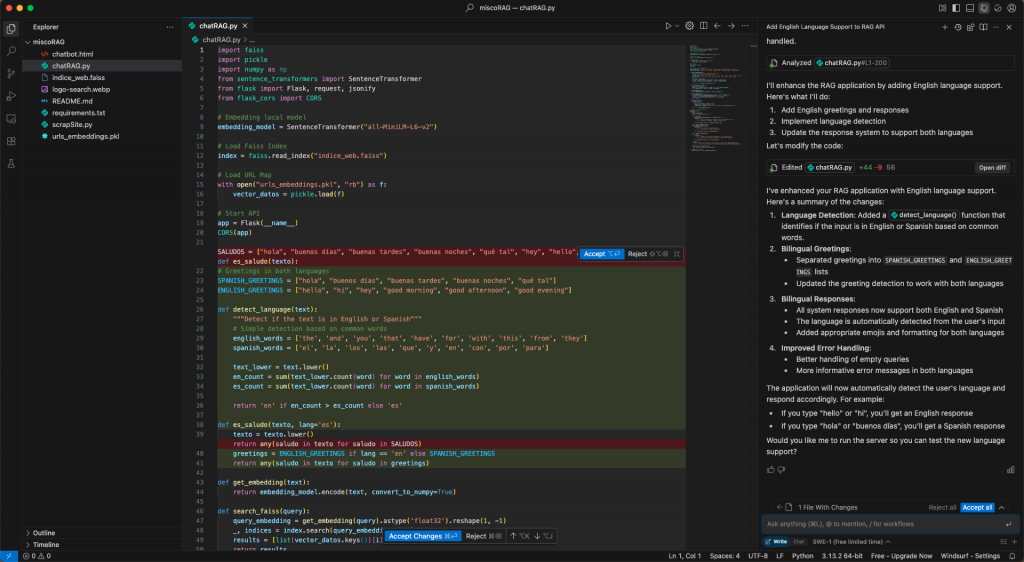My Journey with AI-Powered IDEs
As a tech lead and passionate Python programmer who recently wrote a book on AI Explore Artificial Intelligence: A Complete Guide for the Curious and the Beginner, I’ve been deeply immersed in exploring how artificial intelligence is reshaping software development. AI-powered IDEs like Cursor and Windsurf have become my daily companions, dramatically enhancing my coding workflow. Let’s dive into a comparison of these two exciting tools based on my own hands-on experience.
Understanding AI-Assisted Programming and MCPs
AI-assisted programming is revolutionizing how we build software. By integrating powerful language models directly into our favorite code editors, we can code faster, smarter, and with fewer mistakes. I’ve personally found this incredibly helpful in my Python projects. A major leap forward in this technology is Model-Centric Programming (MCP), allowing AI assistants to interact intelligently with development environments, providing context-aware and task-focused coding support.
Cursor and Windsurf: Brief Overview
Cursor and Windsurf have become two of my favorite AI-powered IDEs, both built upon the familiar foundation of VS Code. Each offers powerful AI integration but takes notably different approaches to enhancing developer productivity. More information about Cursor in cursor.com, and more information about WindSurf here: windsurf.com
Feature-by-Feature Comparison: Cursor vs Windsurf
AI Integration and Workflow
- Cursor: I appreciate its customizability, but sometimes managing contexts manually can break my coding flow.
- Windsurf: I absolutely love Windsurf’s automatic handling of contexts with its Cascade AI agent. It anticipates my needs, significantly boosting my productivity.
AI Models Utilized
- Cursor: Primarily leverages OpenAI’s GPT models, known for their excellent generative capabilities and wide-ranging language comprehension.
- Windsurf: Utilizes a combination of OpenAI and proprietary fine-tuned models, providing specialized assistance that feels more tailored and precise for coding tasks.
User Experience (UX)
- Cursor: Powerful and detailed, but occasionally overwhelming, especially for newcomers.
- Windsurf: The intuitive and clean interface is a joy to use. Even after long coding sessions, Windsurf helps maintain my productivity without fatigue.
Collaboration Tools
- Cursor: Solid individual-oriented features, but team collaboration can feel disconnected.
- Windsurf: Windsurf’s collaboration via Cascade has made a noticeable difference in team projects, facilitating easier knowledge sharing and code reviews.
Performance and Responsiveness
- Cursor: Great for quick, isolated coding tasks, but struggles a bit when handling extensive multi-file edits.
- Windsurf: Although slightly slower on very large codebases, its comprehensive multi-file context handling ensures my large Python projects remain cohesive.
Customization and Extensibility
- Cursor: Offers detailed customizations through
.cursorrulesfiles, which can be highly beneficial but complex. - Windsurf: Its MCP-based extensibility is forward-thinking, and I’m particularly excited about integrating future AI-driven workflows into my coding environment.

Conclusion: Why Windsurf is My Preferred AI-powered IDE
While Cursor is undoubtedly powerful, especially for seasoned developers who like deep control, Windsurf wins my personal recommendation. Its intuitive, context-aware approach perfectly aligns with my heavy AI development workflow. Windsurf’s smart UI, MCP integration, and seamless AI-assisted coding make it my go-to choice. Additionally, Windsurf’s combination of OpenAI and proprietary fine-tuned models delivers precise, contextually accurate assistance tailored specifically for coding, which significantly boosts my productivity.
If you’re passionate about coding and AI like me, Windsurf might just become your new favorite tool too!
